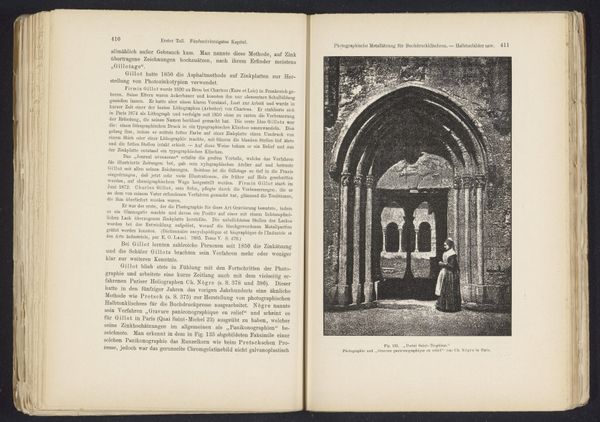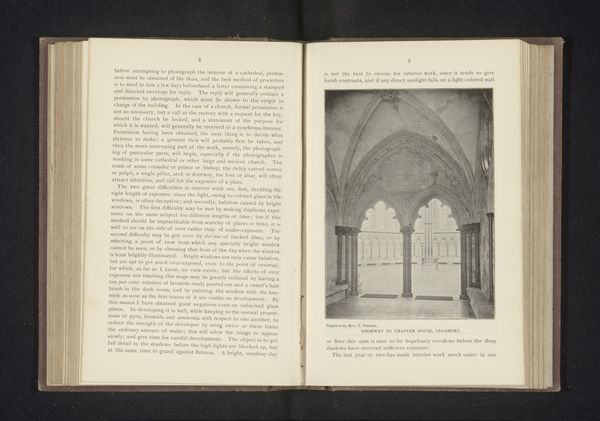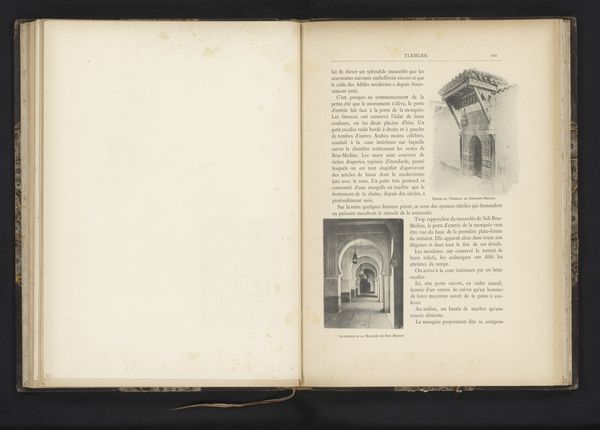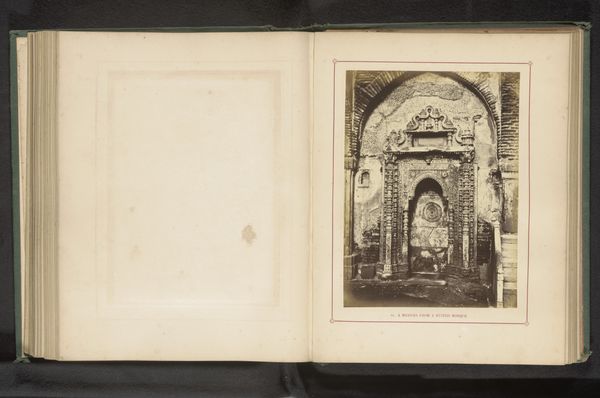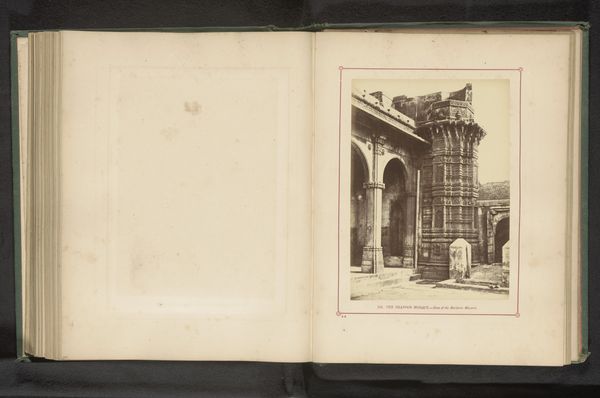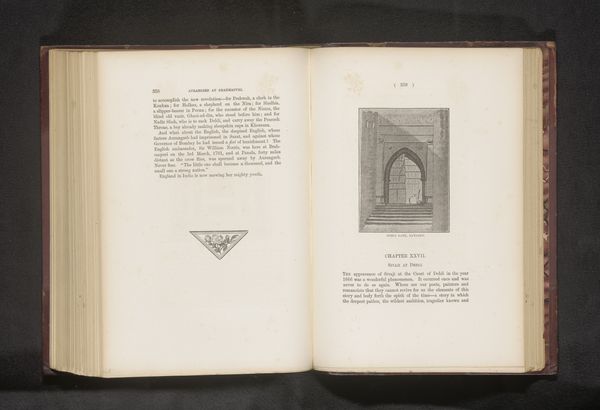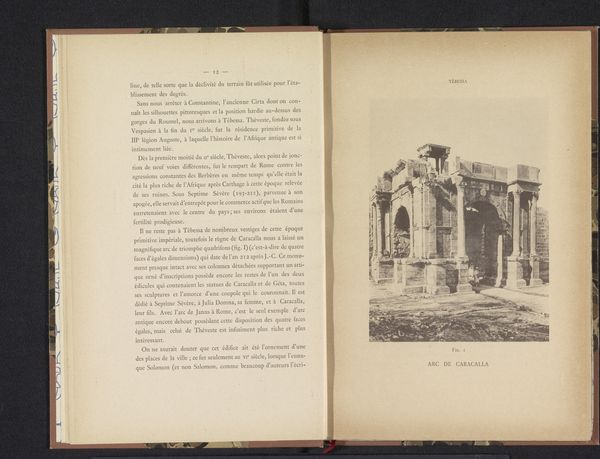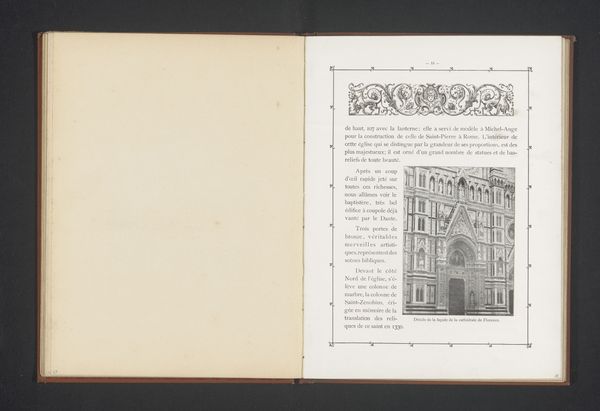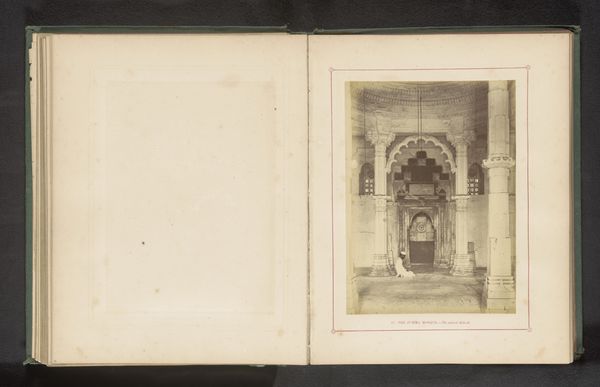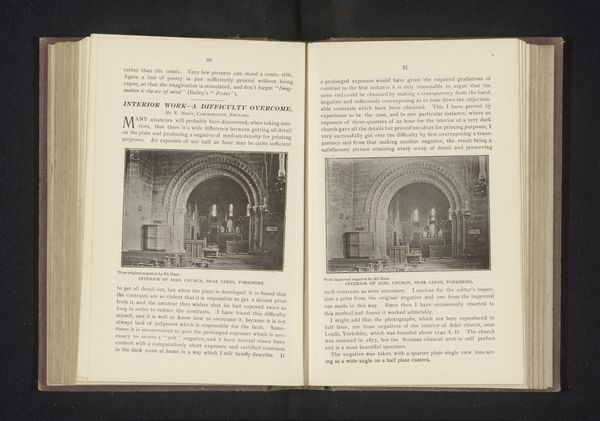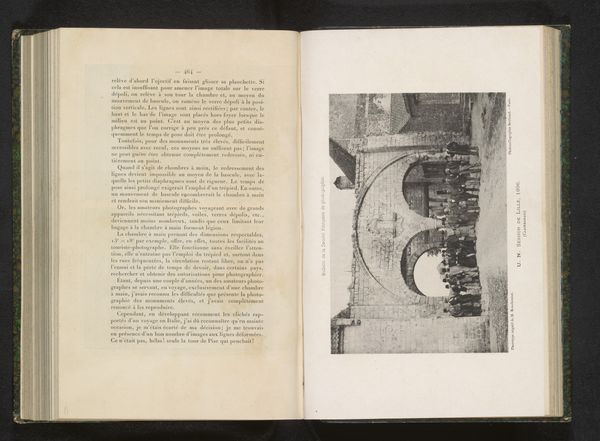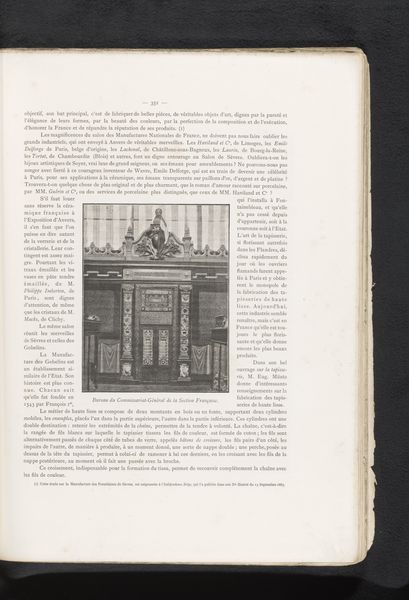
Reproductie van een heliogravure van een ontwerp van een putti en een fabelachtig dier door Hans Sebald Beham before 1869
0:00
0:00
anonymous
Rijksmuseum
print, photography
# print
#
landscape
#
photography
#
ancient-mediterranean
#
cityscape
#
history-painting
Dimensions: height 34 mm, width 100 mm
Copyright: Rijks Museum: Open Domain
Curator: Here we have a page showcasing two different photographic processes from an old volume titled "Merveilles de la Science," dating from before 1869. The image on the left depicts a "Reproduction of a heliogravure of a design of a putti and a fabulous animal by Hans Sebald Beham". Editor: Fascinating. It strikes me immediately by its scale in relation to the book—and how the reproductive photographic process flattens out the texture. Almost looks like it's trying to escape from its rectangular frame. Curator: Well, the context here is key. This isn't simply an isolated artwork, but part of a broader historical and social framework of the time when the technologies of printing allowed for broader consumption of the arts across social and class barriers. Think about what it meant to bring artistic representations—even reproductions—into everyday life. Editor: Absolutely. The method of heliogravure is interesting because of the interplay of chemistry, light and etched metal plates in the printing of ink to paper and the effects of the mechanization, consumption, and distribution of the images during the industrial era, where photographic mediums became integral to disseminating knowledge. The image almost reads as a celebration of craftsmanship and industry at a crossroads. Curator: That’s a sharp observation. Look closer, however, and note the choice of imagery as an entry point in scientific discourse, how myth and fantasy can interplay within an understanding of technology. What's not said in the book is worth noting in this reproduction. Editor: True, true, and consider this reproduction itself—its materials, the quality of the paper. Was it meant to last? How was this labor divided, and who benefited from its mass production? It's amazing how an object can tell us so much about how social practices and access shift over time. Curator: And on a much wider perspective—it questions the nature of art itself, the role and the politics behind accessibility, reproduction, and who defines value and artistry. Editor: It pushes us to consider both the physical reality of creation and the wider impacts and reception and labor. It highlights the materiality and broader contexts, just as this discussion hopefully opens new ways for all of us to see and interpret the world.
Comments
No comments
Be the first to comment and join the conversation on the ultimate creative platform.
